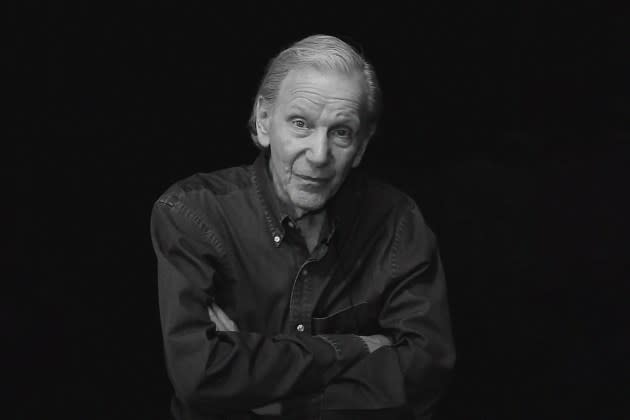Daniel Kramer, Photographer Who Documented Bob Dylan’s Electric Transformation, Dead at 91
- Oops!Something went wrong.Please try again later.
- Oops!Something went wrong.Please try again later.

Daniel Kramer, a rock photographer who captured some of the most iconic Bob Dylan images of the Sixties, including the covers of Bringing It All Back Home and Highway 61 Revisited, died April 29, Rolling Stone confirmed. He was 91.
Kramer first encountered Bob Dylan when he watched him perform “The Lonesome Death of Hattie Carroll” on The Steve Allen Show in 1964. “The lyrics were startling to me,” he told Rolling Stone in 2016. “They were so poetic. I knew this wasn’t an ordinary event. I knew this guy was special.”
More from Rolling Stone
Watch Timothée Chalamet Sing as Young Bob Dylan in New Biopic
Hear Bob Dylan Cover Hank Williams' 'On the Banks of the Old Pontchartrain' for the First Time
Willie Nelson's 4th of July Picnic Moves to Philly, and Bob Dylan Will Perform
Not long afterward, Kramer called up Dylan’s management firm and arranged a one-hour photoshoot in Woodstock, New York. But the two hit it off, and Kramer wound up working with Dylan for five hours. A couple of weeks later, Kramer brought a selection of the best images to Dylan and Albert Grossman, his manager. “They both walked around the table where I laid the prints out,” Kramer said. “Bob turned to me and said, ‘I’m going to Philadelphia next week. Would you like to come?'”
It was the start of a 12-month odyssey where Kramer shadowed Dylan all across America, just as he was transitioning from a folk singer into a rock star. The photographer was even invited into New York’s Columbia Recording Studios in January 1965 to document the recording of Bringing It All Back Home, which marked the first time that Dylan was backed by a rock band. “I had no idea what I was going to hear, and neither did anyone else in the room,” Kramer said. “It was startling. If you’re there the first time that ‘Maggie’s Farm’ comes out of the speakers, you have to look up and say, ‘What’s going on here?’ It was incredible. It was wonderful. It was exciting.”
When the album was finished, Kramer asked Dylan to shoot the album cover. The session took place at Grossman’s home in Bearsville, New York. On the cover, Dylan is seated with a cat on his lap, surrounded by movie magazines, a fallout shelter sign, a copy of Time with Lyndon Johnson on the cover, and several vinyl records, including his previous LP, Another Side of Bob Dylan. Grossman’s wife Sally sits next to him on a couch, wearing a red dress and smoking a cigarette. They’re framed inside a hazy, yellow circle.
“People think I used vaseline to create that circular image or that it’s a blur,” Kramer said. “That’s not what I did. It’s two different pictures on one film. One is moved, and one is not. I wanted to simulate a record spinning or the universe of music. I wanted to show Bob not as a folk singer per se, which is what he was doing at the time. I had just heard electric music. People always say that Dylan went electric at Newport in the summer of 1965. Well, not to me he didn’t. I saw him go electric that January when it was still snowing.”
Kramer’s cover shoot for Highway 61 Revisited later that year was much simpler. He simply placed Dylan on the front steps of Albert Grossman’s Gramercy Park townhouse. Feeling that the background was “all naked,” he told Dylan’s friend Bob Neuwirth to stand behind him and hold one of his cameras. “Dylan looks hostile [in the photo], or it’s a hostile moodiness,” Kramer said in 2010. “He’s almost challenging me or you or whoever’s looking at it: ‘What are you gonna do about it, buster?'”

The covers of Bringing It All Back Home and Highway 61 Revisited are the two most famous Dylan images that Kramer shot, but there are hundreds and hundreds more. He shot the singer backstage with Joan Baez, goofing around in Central Park, playing chess in Woodstock, exploring 5th Avenue with Peter Yarrow and John Hammond Jr., and even sound-checking before his famous August 28th, 1965 concert at Forest Hills Tennis Stadium in Queens, New York. It was Dylan’s first full electric gig and the last time that Kramer worked with Dylan. “That kind of concluded the work,” Kramer said. “And just by coincidence, it was one day past a year from the first time I ever worked with him.”
In 2016, Kramer released the 300-page photo book A Year and a Day. It contains many previous-unseen images of Bob Dylan from 1964 and 1965, but Kramer said there were still many in his collection that may never surface. “You have to take 10 pictures to get one good one,” he said. “The rest is snapshots, junk. They’re repetitive. Many I haven’t even scanned.”
In addition to Dylan, Kramer also photographed Janis Joplin, Judy Collins, Joan Baez, Johnny Cash, John Hammond, Pete Seeger, Gordon Lightfoot, Mike Bloomfield, Joe Frazier, Mario Puzzo, Norman Mailer and David Letterman. Over the years, his work was exhibited in the George Eastman House, the National Portrait Gallery, the Rock & Roll Hall of Fame and Museum, the Whitney Museum of American Art, the Experience Music Project, and The International Center of Photography.
He told Rolling Stone in 2016 that he saw his role as a “historian with a camera.” “I don’t use a typewriter or a keyboard,” he said. “I used a camera. I had a responsibility to aim it in a certain time and place. If I was doing it well, I was making something worthwhile.”
Kramer was married to Arline Cunningham for 43 years. She died in 2016. He is survived by his niece and nephews, Ilene Bereck, Brian Bereck, David Kramer, and Ira Kramer.
Best of Rolling Stone

